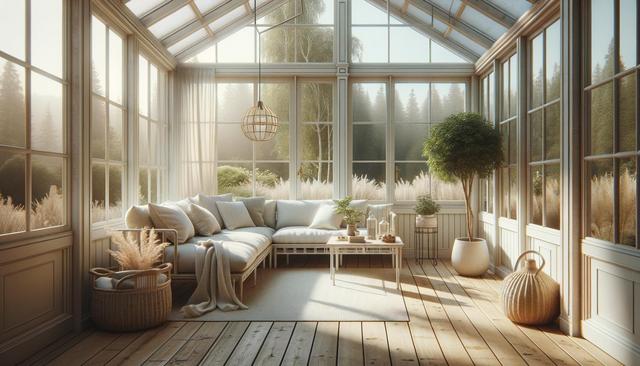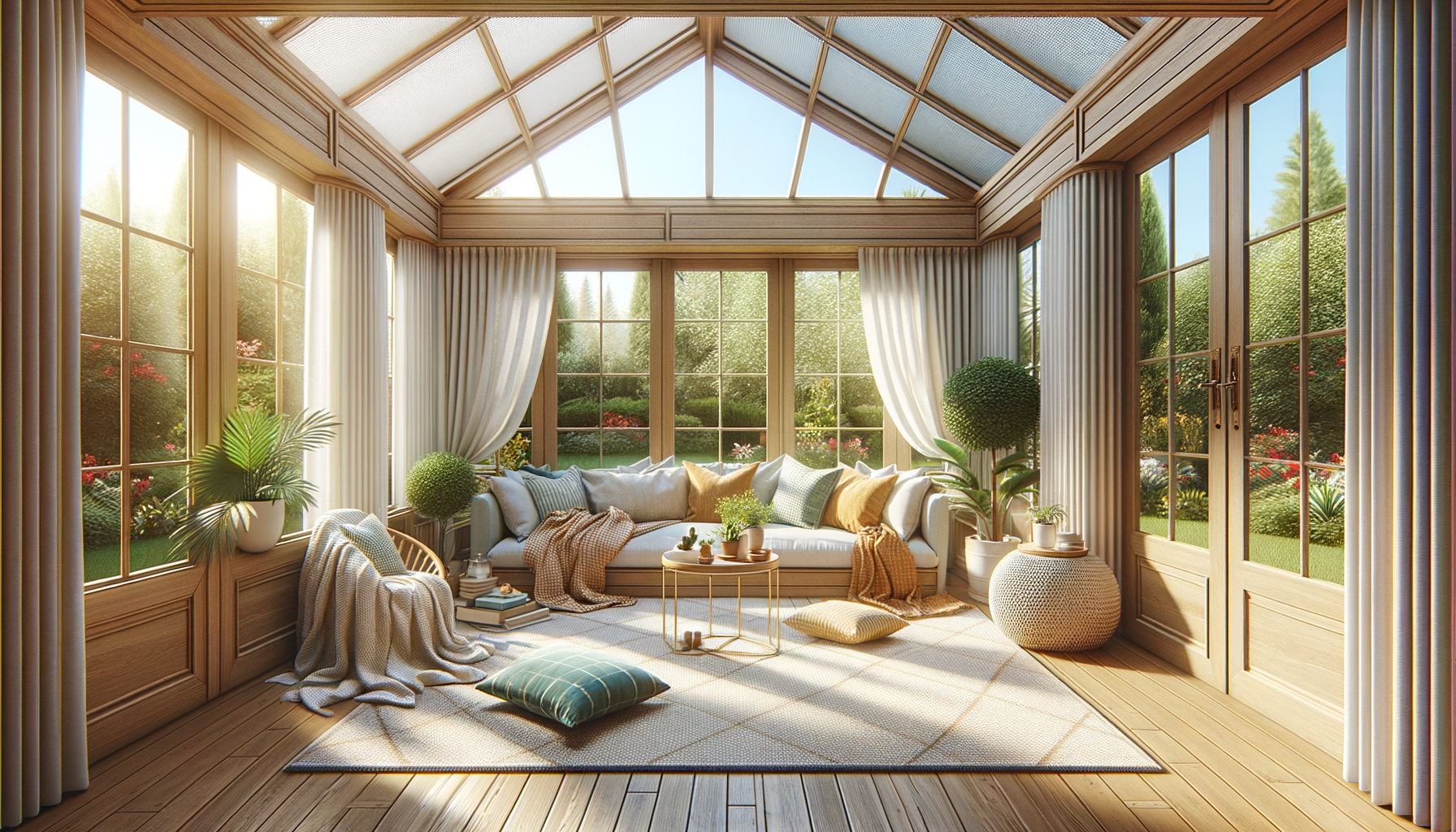Planning Your Sunroom on a Budget
Before diving into construction or design decisions, it’s essential to plan your sunroom project carefully. Start by determining how you intend to use the space—whether as a reading nook, home office, or a casual lounge area. This helps identify the features you truly need and avoid overspending on extras. Assess your home’s layout to find the most cost-effective spot for building a sunroom, typically off an existing room with direct access to sunlight. Choose a location that minimizes the need for extensive structural changes, which can significantly increase costs. Also, consider local building codes and whether a permit is required, as this may impact your budget and timeline.
Research different types of sunrooms such as three-season and four-season options. A three-season sunroom, for instance, is generally more affordable as it does not require full insulation or HVAC integration. A simple aluminum frame with large windows can offer a visually pleasing and functional space without the high price tag of a traditional addition.
Choosing Cost-Effective Materials
When it comes to building an affordable sunroom, materials play a crucial role in determining the overall cost. Opting for budget-friendly yet durable materials can help you stay within your financial plan. Vinyl and aluminum are two popular choices for sunroom frames due to their affordability, low maintenance, and weather resistance. For window panels, consider double-pane glass, which offers better energy efficiency than single-pane, at a reasonable cost.
Flooring is another area where you can save without sacrificing quality. Some cost-effective flooring options include:
- Laminated wood for a warm, natural look
- Luxury vinyl planks that mimic real wood or tile
- Painted concrete for a modern, industrial feel
Reclaimed or repurposed materials can also reduce expenses while adding character to your space. Check local listings for discounted or leftover supplies from larger construction projects.
DIY vs Professional Help
One of the most effective ways to keep costs down when adding a sunroom is to take a do-it-yourself approach where possible. If you have experience with basic construction or carpentry, you might be able to handle tasks like framing, painting, or even installing windows. Many home improvement stores offer prefabricated sunroom kits that simplify the building process and include step-by-step instructions.
However, it’s essential to know your limits. For tasks involving electrical wiring, plumbing, or structural modifications, hiring a licensed professional is advisable to ensure safety and compliance with local building codes. Striking a balance between DIY work and professional assistance can help you manage costs without compromising quality.
Even if you’re not building the entire sunroom yourself, doing some of the interior work—such as painting, furnishing, or decorating—can offer significant savings.
Stylish Yet Affordable Design Ideas
Adding comfort and style to your sunroom doesn’t have to mean spending a lot. With thoughtful design choices, you can create an inviting space on a modest budget. Start by choosing a color palette that reflects natural light and makes the room feel airy—neutral tones like whites, soft grays, and light earth tones work particularly well.
Furnishing the space can be economical if you look in the right places. Consider:
- Thrift store or second-hand finds
- DIY furniture projects using pallets or reclaimed wood
- Multi-purpose furniture like storage benches or fold-out tables
Accessorize with indoor plants, throw pillows, and lightweight curtains to enhance the cozy feel without overspending. Lighting is also key—solar-powered string lights or inexpensive LED lamps can create a warm ambiance in the evenings.
Maximizing Functionality Year-Round
While a sunroom is often associated with summer relaxation, incorporating a few smart choices can make it more functional throughout the year. Insulated curtains or thermal blinds help retain heat during colder months, and energy-efficient windows reduce drafts. Adding a space heater or portable fan depending on the season can extend your use of the room without installing costly HVAC systems.
Consider using weather-resistant rugs and furniture that can withstand temperature changes. If your region experiences extreme weather, adding weather stripping around doors and windows is a simple, low-cost way to improve comfort. For homes with limited square footage, a sunroom can also serve as a flexible space for exercise, hobbies, or dining, which increases the value and utility of your investment.
Conclusion: Bringing Light and Comfort into Your Home
Creating an affordable sunroom is a realistic goal with proper planning, smart material choices, and a creative approach to design. Whether you’re building from scratch or converting an existing patio, the key is to focus on functionality and personal comfort while keeping expenses manageable. By blending do-it-yourself efforts with professional support where needed, and prioritizing cost-effective solutions, you can enjoy a beautiful sunroom that enhances your living space year-round. With the right approach, adding this sunny retreat to your home can be both practical and visually rewarding.



Leave a Reply